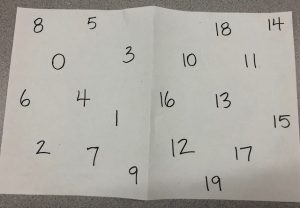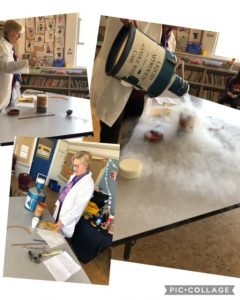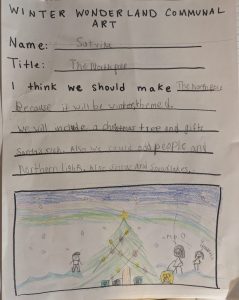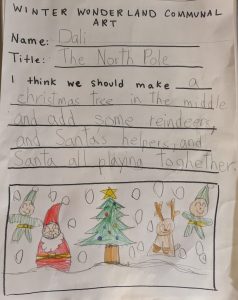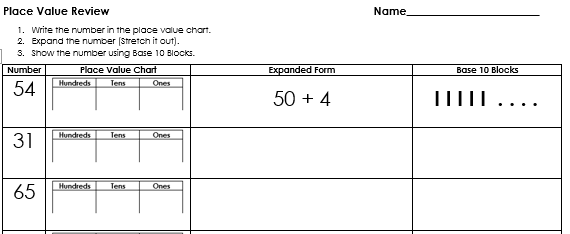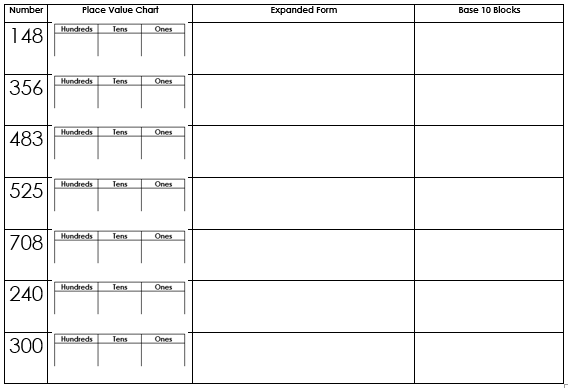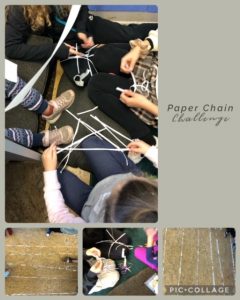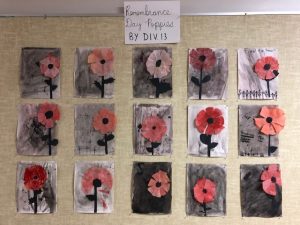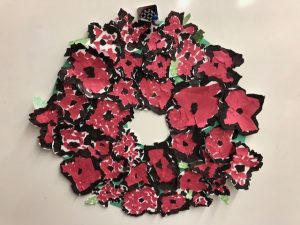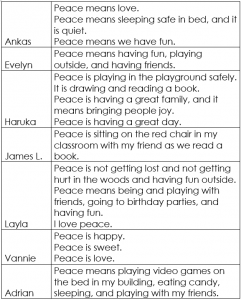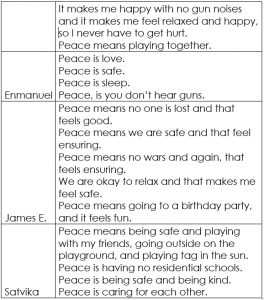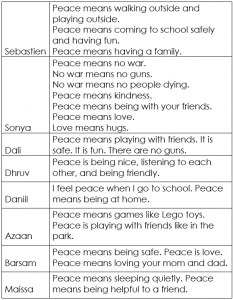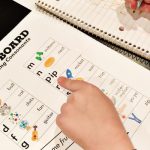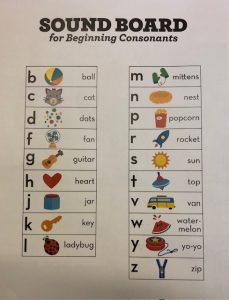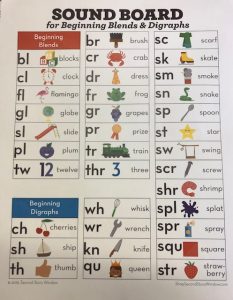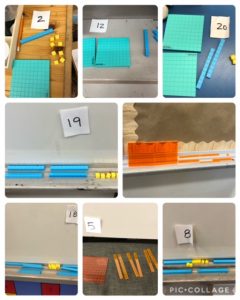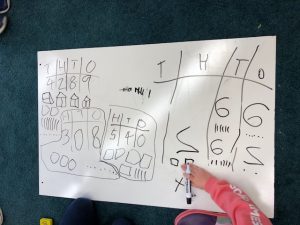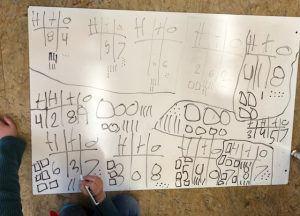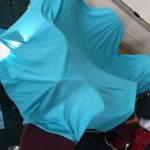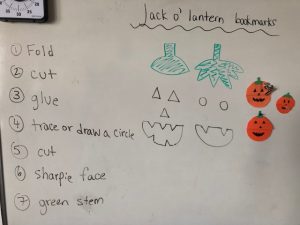Dear families,
We continued to use the word “self-discipline” to practice self-regulation skills so we can build the habit as a character trait. I encourage you to use this word at home to remind them to follow expectations even though they may not feel like it. Remind them this is to build a healthy habit of focusing on doing what they need to do despite distractions.
Here’s how ChatGPT would explain self-discipline to an 8 year old. Perhaps it resonates with you and you’d like to share it with your child:
Self-discipline is like having your own superpower! It means being able to control yourself and make good choices, even when something fun or distracting is around. It’s like being a superhero who can focus on what needs to be done, like finishing homework or chores, even when you really want to play or do something else.
Just like a superhero follows a plan to save the day, self-discipline helps you stick to your plan or goals. It’s about staying determined and not giving up easily. So, when you want something, self-discipline helps you work towards it step by step, even if it’s hard sometimes.
Having self-discipline doesn’t mean you can’t have fun or enjoy yourself! It’s about finding a balance between having fun and doing what you need to do. It’s a skill that grows stronger when you practice it, and it helps you become really good at things you love doing!
We are authors.
We wrote a letter to Santa or to our family. On Thursday, we walked with Ms. Santorelli’s and Ms. Tai’s classes to drop off our letters in the mailbox. Please check SpacesEDU for our picture! There are a few more families who have yet to initiate access to SpacesEDU. I re-sent an invite on Thursday evening so you can view the reflection posts your child has created.
We are mathematicians.
We started learning about fractions. Here is the grade 3 curriculum on fraction concepts.
Big Ideas:
-
- Fractions are a type of number that can represent quantities.
Students are expected to know the following:
-
- Fractions are numbers that represent an amount or quantity.
- Fractions can represent parts of a region, set, or linear model.
- Fraction parts are equal shares or equal-sized portions of a whole or unit.
- Provide opportunities to explore and create fractions with concrete materials.
- recording pictorial representations of fraction models and connecting to symbolic notation
- equal partitioning
They are quick learners! We learned that the top number is called the numerator and the bottom number is the denominator. One key understanding is that fractions must be equal parts.
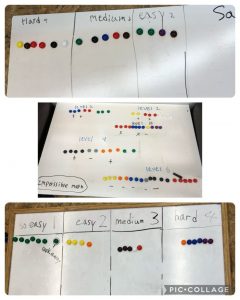 We first learned about fractions of a whole like pies and pizzas. We can slice these whole items into equal parts.
We first learned about fractions of a whole like pies and pizzas. We can slice these whole items into equal parts.
Then we learned about fractions in a set. I absolutely love to plan hands-on, interactive activities where students use higher level thinking which include two of our core competencies: critical thinking skills and communication skills. They created increasing levels of difficulty for classmates to practice naming the fractions.
How to support at home: Find items at home your child can use to create fractions of a set. Ask them to tell you what the fraction is and to explain how they know. See if they can remember that the top number is called the numerator (how many as part of the set) and the bottom number is the denominator (how many total in the set).
This week, we have been practicing our doubles: 1 + 1 = 2, 2 + 2 = 4, 3 + 3 = 6, 4 + 4 = 8, etc. to 10 + 10 = 20
If you don’t have one yet, please create a random numbers chart to practice 3-5 minutes every day. I can tell you that this goes a long way in helping your child feel more confident with learning their facts. In December, we will start learning about addition so having these facts solidified will allow your child to focus on addition concepts and not have to also worry about accuracy when calculating. So far, here are the ones we learned:
- +1, -1
- +2, -2
- +10, -10
- Making tens
Next will be practicing our doubles +1 (1 + 2 = 3, 2 + 3 = 5, 3 + 4 = 7, etc.) so learning the doubles will be the key to success to learning doubles +1.
Alternate game to practice doubles: Take a deck of cards. Remove the Jack and King. The A = 1 and the Queen = 0 (zero). Shuffle the cards and divide them equally. Play Doubles Race. Each player takes a turn to flip over one card at a time. The first person to call out the sum for the double, takes the card. For example, I flip over a 5 and I call out 10 before my partner. Then I keep the card. Then my partner flips over the card. Whoever calls out the doubles sum first gets that card. Take turns flipping over one card at a time. Have fun!
We are scientists.
We learned about different water sources including local watersheds like oceans, lakes, rivers, wells, and springs. We discovered that the majority of fresh water is stored underground and in glaciers. We also learned that less than 3% of earth’s water is fresh water and only about 0.5% of this fresh water is accessible so we need to do our part to conserve it. Our fresh water is a limited resource and is not being replaced at the same rate as it is being used.
We learned about the water cycle. Check out this video that explains the water cycle. Students loved dancing to this song by Blazer Fresh on GoNoodle! Me too!
Please feel free to check out this song: The Water Cycle Song.
A Special Scientist Visit
On Wednesday, Ms. Cramb, our grade 5 teacher down the hall, gave us a special presentation! Thank you to her dad and her dad’s friend from SFU, she was given some liquid nitrogen to share with almost all of the primary classes.
She taught us about states of matter and introduced us to dry ice or liquid nitrogen.
They got to witness how it froze a banana, strawberry, blueberry, eraser, pencil, rubber tube, metal rod, and balloon!
I was impressed with not just the questions they asked, but the many meaningful sentiments of appreciation they individually shared with Ms. Cramb at the end of the presentation.
Ask your child what they thought and how they felt about the presentation. Then to push their curiosity, ask them to come up with three more questions they are wondering about. Then feel free to learn together by researching the answers! I wonder what you can learn together! Have fun!
ADST & Science inquiry
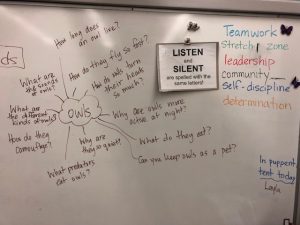 Each week, we have one to two opportunities to learn with the laptops through thoughtfully planned scaffolded learning. On Friday, we learned some tips on how to do effective researching and how to keep us safer.
Each week, we have one to two opportunities to learn with the laptops through thoughtfully planned scaffolded learning. On Friday, we learned some tips on how to do effective researching and how to keep us safer.
Our curricular competencies for ADST: Applied Skills & Technologies
- Use materials, tools, and technologies in a safe manner in both physical and digital environments
- Develop their skills and add new ones through play and collaborative work
- Explore the use of simple, available tools and technologies to extend their capabilities
First, we sparked curiosity by brainstorming questions about owls. Then we practiced how to search facts about owls. Within minutes, they were sharing cool facts about owls with each other!
How to support at home: Ask your child what they learned about owls so far and record 3-5 new things they wonder about. Encourage them to use their core competency of critical thinking skills to come up with new questions. Then have fun researching and learning together!
Ms. Kapusta says: This week, students began planning for a communal art project we will be making together as a class in the upcoming weeks. We will be using coloured paper to create a dynamic winter scene inside the classroom. We took a vote on what we wanted the scene to be and we settled on Santa’s North Pole! Students used their Creative Thinking skills to plan out what they want the scene to include and sketch out their vision. Through this communal art project students will “create an artistic work collaboratively and as an individual using ideas inspired by imagination, inquiry, experimentation, and purposeful play” (BC Curriculum, Arts Education 2/3).
It will also be a great way for students to grow their Social Awareness skills as they’ll be working together towards contributing to the classroom community in a positive way. In the afternoon, we practiced some community-building by working together to decorate the classroom for the holidays with paper chains and snowflakes. You might be able to catch a peak of students’ snowflakes hanging in our classroom windows. They turned out really beautiful!
We are musicians.
For the past two weeks, we have been practicing our songs with Mr. Kenney’s class. Some students can use some extra support at home to learn the words to our songs so please practice. Thank you for your support at home.
Here are the links to the two songs we will be performing on Tuesday, December 12. There will be an afternoon performance at 1:30 pm and an evening performance at 6:30 pm. Students are asked to return to school at 6:00 pm (not earlier, please). Mr. Turpin would like them to wear black bottoms and a plain white top, please.
Sign Language
Since the beginning of the year, I have been teaching them different American Sign Language signs. They love it! Here are some of the ones they learned so far. I wonder how many you can learn from them?
|
amazing and appreciate |
bathroom beautiful better book |
carpet change cold come cookie |
dance day different drink |
eat eight excited |
find finish five four |
go |
happy help hot hungry hurt/pain |
I love you. | jump |
| kindness |
learn learner listen |
Me too! milk minutes more |
name nice nine no one |
pay attention play please |
read |
sad same safety see seven sit six smile sorry stand stop |
ten thank you three time tired two |
wait want water welcome what where write world |
yes you |
Ways to Support at Home
A great way to connect with your child about what they learn in school is to read these blog posts together! If your child is ready, have them read the blog post to you. This is a meaningful way to have them practice their reading while also talking about what they learned. Ask your child to teach you what they learned. Being able to teach a concept to someone requires a deep understanding of the material. When they explain something in simple terms or teach it effectively, it can also solidify their knowledge which makes it easier to recall and apply the information in different contexts too.
Also, when you see a note in the planner stating what we learned that day, this is a phenomenal opportunity to ask them to teach you about it. If new concepts are reviewed within 24 hours, their understanding sticks better and if you ask them to teach you, it’s even better!
Next week
We have some exciting things happening next week!
- On Monday at 9 am, we have Metro Vancouver visiting our class to present a workshop on the Watershed Water Cycle! This is a free workshop and will directly enhance our Science curriculum.
- On Wednesday at 11:15 am, we will be making crystal candy canes. We will need some parent volunteers. If you are available from 10:30 to 11:15, please send me an email at Livia.Chan@burnabyschools.ca to let me know and I will send you more details. Thank you so much for your help!
- On Thursday, we have our OWL in the Classroom workshop! If you haven’t paid on School Cash Online yet, please do. Then please fill out this online form as soon as possible.
We will also need your child to bring in a glass jar, please. If you have extras, please send those to school too in case others do not have one. Thank you so much! We need these to make our crystal candy canes on Wednesday, Dec. 6. Your glass jars will be returned after the activity.
I am deeply grateful for your continued support by encouraging daily reading and writing, practicing math concepts and addition/subtraction facts, talking about what we learned at school, and using the same language we use for social emotional learning (for example: stretch zone, self-discipline, teamwork, determination). The more we notice and name what we see, the more effective we are at nurturing the character skills that will become habits through to adulthood. Being able to master self-discipline has the potential for future success in many areas of their lives. If this resonates with you too, let’s both work together to use the same language for consistency! 🙂
Grateful for your and our connection, Ms. Chan
